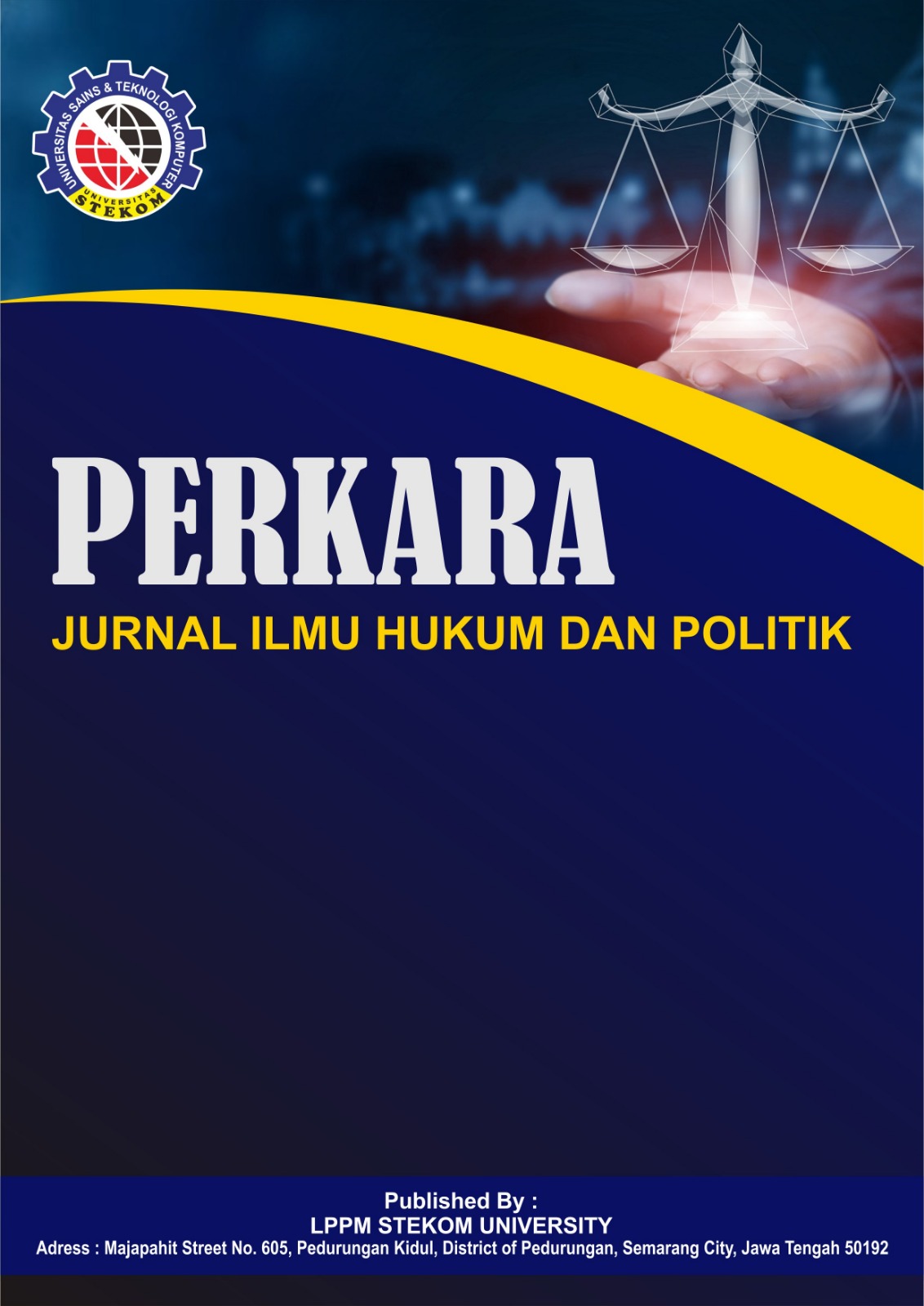Efektivitas Hukuman bagi Pelaku Kejahatan Siber di Indonesia: Analisis Kriminologi dengan Metode Content Analysis
DOI:
https://doi.org/10.51903/perkara.v3i1.2343Keywords:
Cybercrime, Law Enforcement, Cybersecurity, Cybercrime Prevention, Cybersecurity LawAbstract
Cybercrime has become a significant global threat, with Indonesia experiencing a sharp increase in cyber-related offenses. Reports from the National Cyber and Crypto Agency (BSSN) indicate that cybercrime cases rose from 3,000 in 2018 to 15,400 in 2023, underscoring the need for stricter legal enforcement. Despite existing regulations under the Electronic Information and Transactions Law (UU ITE), penalties often fail to provide a deterrent effect. Around 60% of convicted cybercriminals receive less than three years of imprisonment, while only 15% serve more than five years. This study examines the effectiveness of cybercrime penalties in Indonesia and evaluates their impact on recidivism rates. Using a qualitative approach with content analysis, this study reviews legal documents, court rulings, and expert interviews. A comparative analysis with European Union and United States regulations is conducted to identify best practices. Findings reveal that weak enforcement leads to a recidivism rate exceeding 40% within two years. Additionally, Indonesia’s maximum penalty of six years and a fine of IDR 2 billion remain significantly lower than the EU’s 10-year sentence and fines up to €20 million. Stricter legal reforms, increased sanctions, and regulatory harmonization with global standards are essential to enhancing deterrence and law enforcement effectiveness. This study contributes to the discourse on cybercrime law by highlighting gaps in Indonesia’s legal system and proposing measures to strengthen enforcement.
References
Aris, M., Wirda, W., Rusbandi, A. S., Zulhendra, M., Bahri, S., & Fajri, D. (2024). Peran Niat (Mens rea) dalam Pertanggungjawaban Pidana di Indonesia. Jimmi: Jurnal Ilmiah Mahasiswa Multidisiplin, 1(3), 240–252. https://doi.org/10.71153/jimmi.v1i3.140
Arnell, P., & Faturoti, B. (2023). The Prosecution of Cybercrime–Why Transnational and Extraterritorial Jurisdiction Should be Resisted. International Review of Law, Computers and Technology, 37(1), 29–51. https://doi.org/10.1080/13600869.2022.2061888
Billow, J. (2023). No Country is an Island: Embracing International Law Enforcement Cooperation to Reduce the Impact of Cybercrime. Journal of Cyber Policy, 9(2), 1–10. https://doi.org/10.1080/23738871.2023.2245417
Cataldi, L., & Silvia, C. (2024). Prison and Love: The Role of Affection and Rehabilitative Actions in Reducing Recidivism and Beyond. Social Sciences, 13(6), 323. https://doi.org/10.3390/socsci13060323
Chin, Y. C., & Zhao, J. (2022). Governing Cross-Border Data Flows: International Trade Agreements and Their Limits. Laws, 11(4), 63. https://doi.org/10.3390/laws11040063
Collier, B., Thomas, D. R., Clayton, R., Hutchings, A., & Chua, Y. T. (2022). Influence, Infrastructure, and Recentering Cybercrime Policing: Evaluating Emerging Approaches to Online Law Enforcement Through a Market For Cybercrime Services. Policing and Society, 32(1), 103–124. https://doi.org/10.1080/10439463.2021.1883608
Curtis, J., & Oxburgh, G. (2023). Understanding Cybercrime in ‘Real World’ Policing and Law Enforcement. Police Journal, 96(4), 573–592. https://doi.org/10.1177/0032258X221107584
Dinda, A. L. S. (2024). Efektivitas Penegakan Hukum Terhadap Kejahatan Siber di Indonesia. AL-DALIL: Jurnal Ilmu Sosial, Politik, Dan Hukum, 2(2), 69–77. https://doi.org/10.58707/aldalil.v2i2.777
Graves, J. T., & Acquisti, A. (2023). An Empirical Analysis of Sentencing of “Access To Information” Computer Crimes. Journal of Empirical Legal Studies, 20(2), 434–471. https://doi.org/10.1111/jels.12349
Harkin, D., & Whelan, C. (2022). Perceptions of Police Training Needs in Cyber-Crime. International Journal of Police Science and Management, 24(1), 66–76. https://doi.org/10.1177/14613557211036565
Imandeka, E., Putra, P. O. H., Hidayanto, A. N., & Mahmud, M. (2024). Exploring the World of Smart Prisons: Barriers, Trends, and Sustainable Solutions. Human Behavior and Emerging Technologies, 2024(1), 6158154. https://doi.org/10.1155/2024/6158154
Juhara, N. F., Amalia, M., & Mulyana, A. (2025). Efektivitas Penegakan Hukum terhadap Judi Online di Indonesia: Analisis Yuridis dan Sosiologis. Journal of Contemporary Law Studies, 2(2), 153–164. https://doi.org/10.47134/lawstudies.v2i2.3353
Kovalchuk, O., Karpinski, M., Banakh, S., Kasianchuk, M., Shevchuk, R., & Zagorodna, N. (2023). Prediction Machine Learning Models on Propensity Convicts to Criminal Recidivism. Information, 14(3), 1–15. https://doi.org/10.3390/info14030161
Loggen, J., Moneva, A., & Leukfeldt, R. (2024). A Systematic Narrative Review of Pathways Into, Desistance from, and Risk Factors of Financial-Economic Cyber-Enabled Crime. Computer Law & Security Review, 52, 105858. https://doi.org/10.1016/j.clsr.2023.105858
Mishra, A., Alzoubi, Y. I., Anwar, M. J., & Gill, A. Q. (2022). Attributes Impacting Cybersecurity Policy Development: An Evidence from Seven Nations. Computers and Security, 120, 102820. https://doi.org/10.1016/j.cose.2022.102820
Perlindungan, R., Bagi, H., Perbankan, K., Tengah, D., Kejahatan, A., Azis, T. M., & Redi, A. (2025). Rekonstruksi Perlindungan Hukum Bagi Konsumen Perbankan di Tengah Ancaman Kejahatan Teknologi. Jurnal Retentum, 7(1), 386–398. https://doi.org/10.46930/retentum.v7i1.5380
Robalo, T. L. A. S., & Abdul Rahim, R. B. B. (2023). Cyber Victimisation, Restorative Justice and Victim-Offender Panels. Asian Journal of Criminology, 18(1), 61–74. https://doi.org/10.1007/s11417-023-09396-9
Rodrigues, G. A. P., Serrano, A. L. M., Vergara, G. F., Albuquerque, R. de O., & Nze, G. D. A. (2024). Impact, Compliance, and Countermeasures in Relation to Data Breaches in Publicly Traded U.S. Companies. Future Internet, 16(6), 201. https://doi.org/10.3390/fi16060201
Sandøy, T. A., Østhus, S., & Bretteville-Jensen, A. L. (2024). Preventing Future Crime in Adolescent Drug Offenders: A Study Of Differential Sanction Effects on Recidivism. Criminology and Criminal Justice, 24(1), 164–183. https://doi.org/10.1177/17488958211070364
Sarkar, G., & Shukla, S. K. (2023). Behavioral Analysis of Cybercrime: Paving the Way for Effective Policing Strategies. Journal of Economic Criminology, 2, 100034. https://doi.org/10.1016/j.jeconc.2023.100034
Schiks, J. A. M., van de Weijer, S. G. A., & Leukfeldt, E. R. (2022). High Tech Crime, High Intellectual Crime? Comparing the Intellectual Capabilities of Cybercriminals, Traditional Criminals and Non-Criminals. Computers in Human Behavior, 126, 106985. https://doi.org/10.1016/j.chb.2021.106985
Sun, T., Xu, Y., Wang, H., & Chen, Z. (2025). A Legal Study: How Do China’s Top 10 Intelligent Connected Vehicle Companies Protect Consumer Rights? World Electric Vehicle Journal, 16(3), 140. https://doi.org/10.3390/wevj16030140
Sundram, P. (2024). ASEAN Cooperation to Combat Transnational Crime: Progress, Perils, and Prospects. Frontiers in Political Science, 6, 1304828. https://doi.org/10.3389/fpos.2024.1304828
Tan, E., Lerouge, E., Du Caju, J., & Du Seuil, D. (2023). Verification of Education Credentials on European Blockchain Services Infrastructure (EBSI): Action Research in a Cross-Border Use Case between Belgium and Italy. Big Data and Cognitive Computing, 7(2), 79. https://doi.org/10.3390/bdcc7020079
Yadav, A., Kumar, A., & Singh, V. (2023). Open-Source Intelligence: A Comprehensive Review of the Current State, Applications and Future Perspectives in Cyber Security. In Artificial Intelligence Review (Vol. 56, Issue 11). Springer Netherlands. https://doi.org/10.1007/s10462-023-10454-y
Yuan, J. (2023). Legislative Practice of Preventive Detention in China. Peking University Law Journal, 11(1), 73–90. https://doi.org/10.1080/20517483.2023.2223848
Zhang, H., & Gong, X. (2023). The Research on an Electronic Evidence Forensic System for Cross-Border Cybercrime. The International Journal of Evidence & Proof, 28(1), 21–44. https://doi.org/10.1177/13657127231187059











4.png)
